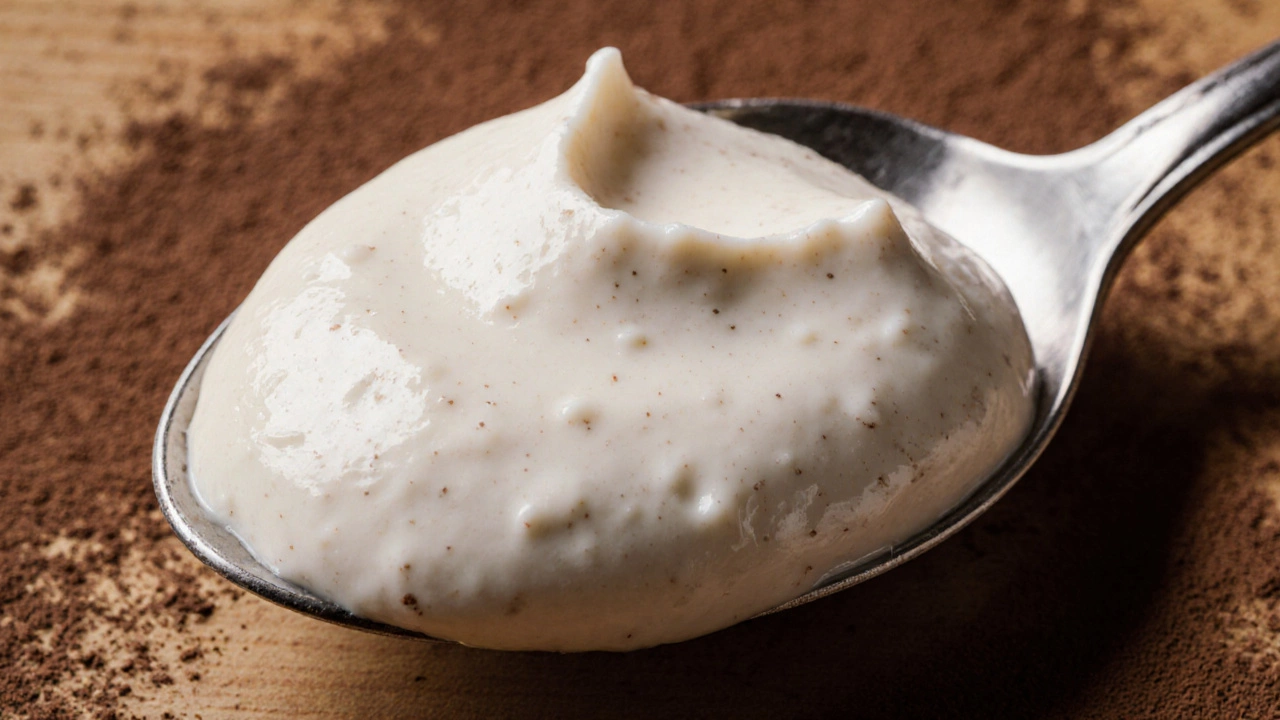
Ever bitten into a slice of tiramisu and wondered, what cheese has mold? It’s not what you think. The creamy layer that gives tiramisu its rich, silky texture isn’t moldy cheese at all - but people keep asking because of how it looks. That soft, white, almost fuzzy spread? It’s mascarpone. And no, it’s not spoiled. It’s supposed to be that way.
Why People Think Tiramisu Cheese Has Mold
The confusion starts with appearance. Mascarpone is thick, pale, and sometimes has tiny air pockets or a slightly uneven surface after being whipped with eggs and sugar. When it sits in the fridge overnight, it can develop a faint sheen or slight texture variation that looks like surface mold - especially to someone unfamiliar with Italian dairy.
Compare that to cheeses like Gorgonzola or Camembert, where blue or white mold is added on purpose. Those molds are cultures - Penicillium roqueforti or Penicillium camemberti - and they’re safe, even delicious. But mascarpone? No mold is added. Ever. It’s made from cream, heated and acidified, then strained. That’s it. No cultures. No aging. No mold.
Still, people see the texture and panic. They’ve been taught that white stuff on cheese = bad. But in the world of artisanal dairy, that’s not always true. Mascarpone is a fresh cheese, not a ripened one. It’s meant to be eaten within days, not months. If it’s fresh, it should smell like sweet cream, not earthy or ammonia-like. If it smells off, then yes - toss it. But if it’s just creamy and soft? That’s normal.
What Is Mascarpone, Really?
Mascarpone is an Italian cream cheese from Lombardy. It’s not a true cheese in the traditional sense - it’s more like a buttery dairy spread. It’s made by heating heavy cream (at least 60% fat) and adding a food acid like citric acid or tartaric acid. The cream thickens, then gets strained through cloth to remove excess liquid. The result? A dense, smooth, slightly sweet product that melts in your mouth.
It’s not aged. It’s not fermented. It doesn’t contain mold spores. That’s why it’s so safe to use in no-bake desserts like tiramisu. You’re not eating something that’s been sitting for weeks. You’re eating fresh, high-fat cream that’s been gently transformed.
Real mascarpone has one ingredient: cream. Some cheaper versions add stabilizers like carrageenan or gums to mimic texture. But if you see a label that says “mascarpone-style” or “cream cheese spread,” it’s not the real thing. Authentic mascarpone should be rich, unctuous, and just a touch tangy - never chalky or grainy.
How to Spot Real vs. Fake Mascarpone
Here’s how to tell if what you’re buying is the real deal:
- Look at the ingredients. Only cream. Maybe a touch of citric acid. That’s it. If you see stabilizers, thickeners, or “vegetable oils,” walk away.
- Check the fat content. Real mascarpone is at least 60% fat. Anything under 45% is a substitute.
- Texture test. Scoop a spoonful. It should hold its shape like soft butter, not slide off like whipped cream. If it’s runny, it’s been watered down.
- Smell it. Fresh mascarpone smells clean and milky. If it smells sour, yeasty, or like wet cardboard, it’s gone bad.
Brands like Galbani, BelGioioso, and Cremoso are reliable. If you’re in Italy, look for “Mascarpone di Lombardia” - that’s a protected designation. Outside Europe, stick to the ingredient list. No shortcuts.
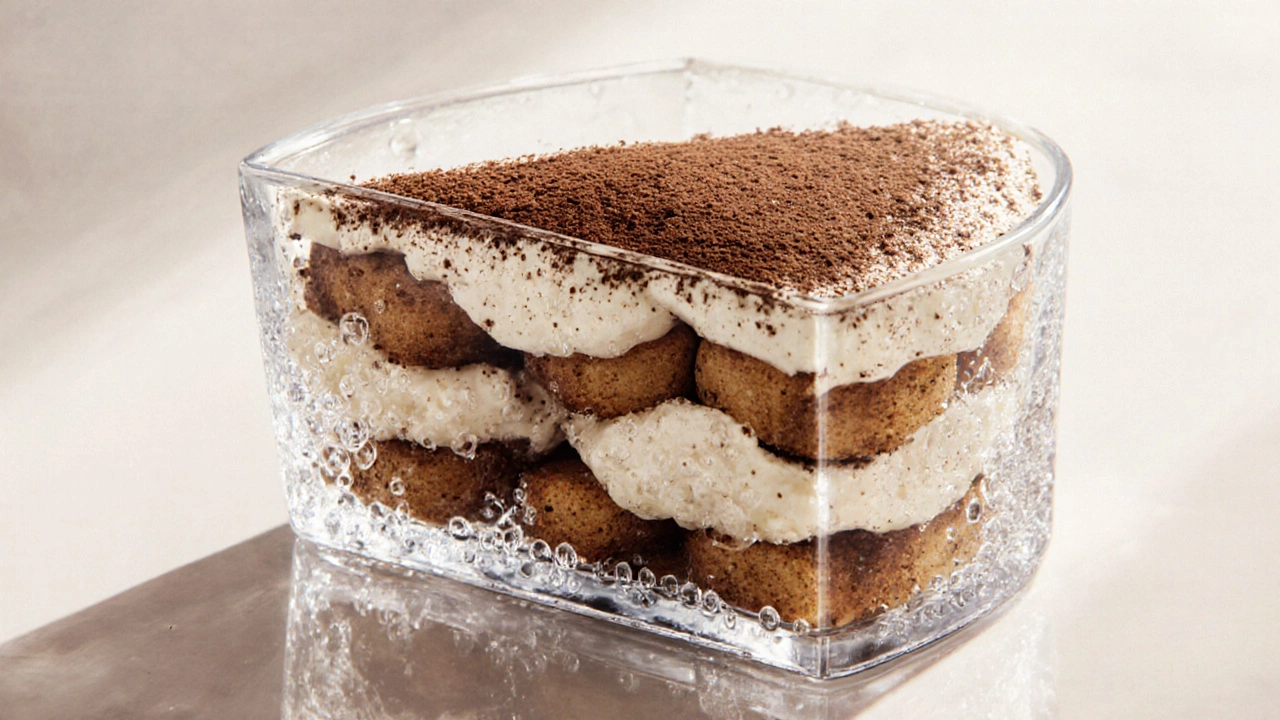
What About the Mold in Other Cheeses?
It’s worth clarifying because people mix up cheese types. Blue cheeses like Roquefort, Gorgonzola, and Stilton use mold intentionally. The mold grows inside the cheese as it ages, creating bold, sharp flavors. Soft-ripened cheeses like Brie and Camembert have a white rind made of Penicillium candidum - that’s the same mold used in some medical penicillin, and it’s completely safe.
But none of those are used in tiramisu. Ever. Tiramisu is a dessert of contrast: bitter espresso, sweet mascarpone, and crunchy ladyfingers. The moldy cheeses belong on a cheese board with wine, not layered with coffee-soaked biscuits.
If you see a recipe claiming to use “blue cheese” or “moldy ricotta” in tiramisu, it’s either a mistake or a gimmick. Traditional tiramisu has never included mold. It never should.
What Happens If You Use Moldy Mascarpone?
Here’s the hard truth: if your mascarpone has actual mold - fuzzy green, black, or gray spots - throw it out. Unlike hard cheeses where you can cut off the mold, mascarpone is too soft. Mold spores spread through the whole batch, even if you can’t see them. Eating it could make you sick.
Signs your mascarpone has spoiled:
- Fuzzy patches (not just texture)
- Sour or fermented smell (not just tangy)
- Separation with watery liquid pooling on top
- Off-color - yellow, gray, or green tinges
Good mascarpone lasts about 5-7 days in the fridge. Once opened, use it within 3 days. Freeze it if you need to keep it longer - it won’t be perfect for spreading, but it works fine in baked or blended desserts.
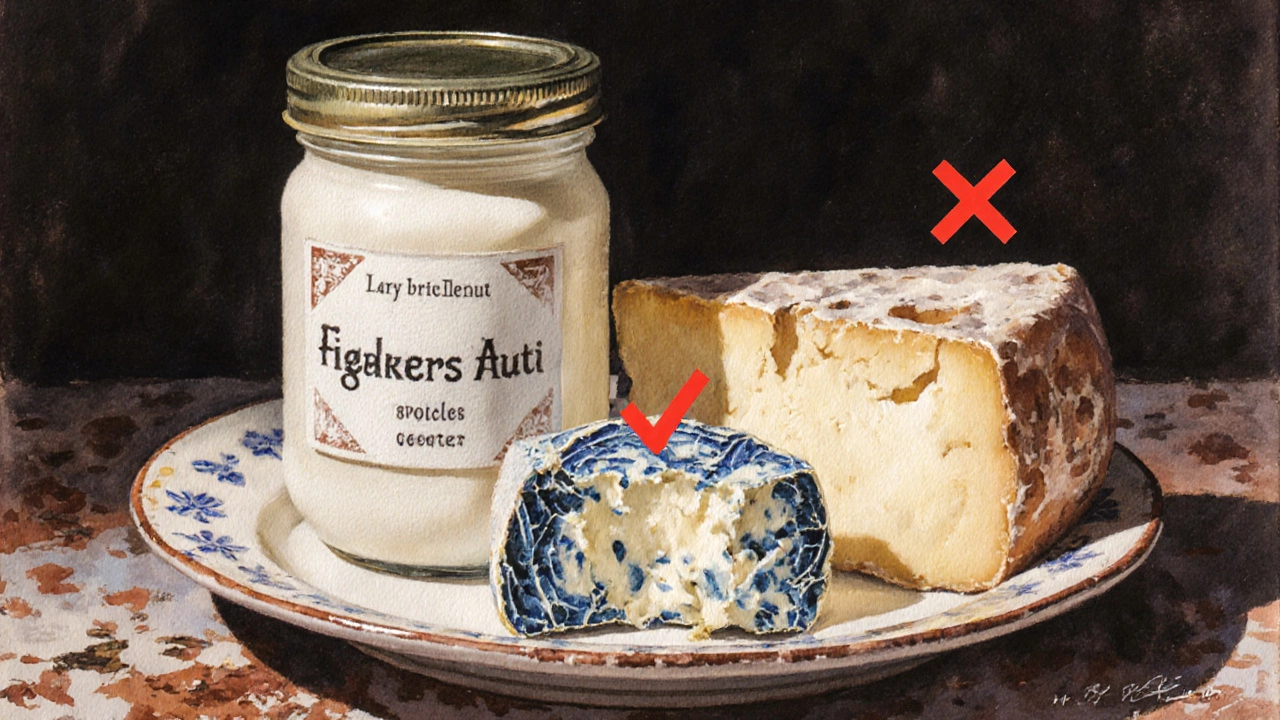
Why Tiramisu Works Without Mold
Part of tiramisu’s magic is its simplicity. No fancy aging. No complex cultures. Just cream, eggs, coffee, and cocoa. The magic happens in the layers. The ladyfingers soak up the espresso and become tender. The mascarpone mixture coats them like a cloud. The cocoa dust on top adds bitterness and contrast.
It’s not about complexity. It’s about balance. And that balance relies on freshness. Using a moldy ingredient would ruin it - not just in flavor, but in texture. Mold changes the structure of dairy. It breaks down proteins and fats. Your tiramisu would turn grainy, sour, or slimy.
That’s why every authentic recipe - from Rome to New York - uses only fresh, clean mascarpone. The “mold” you see? It’s just air. Or maybe a bit of condensation. It’s not dangerous. It’s not mold. It’s just cream doing what cream does best: turning into something unforgettable.
Can You Substitute Mascarpone?
If you can’t find mascarpone, don’t panic. But don’t swap it for cream cheese or ricotta unless you’re okay with a different dessert.
Best substitute: mix 8 oz of full-fat cream cheese with 1/4 cup heavy cream and 1 tbsp sugar. Whip until smooth. It won’t be identical, but it’ll get you close.
Worst substitute: ricotta. It’s grainy, watery, and has a sharp tang. It’ll make your tiramisu taste like cottage cheese with coffee.
And no - don’t use blue cheese. Seriously. Don’t.
Is the white stuff on mascarpone mold?
No. The white or creamy texture on mascarpone is natural. It’s not mold - it’s just the fat and protein structure of fresh cream. If you see fuzzy spots, discoloration, or a sour smell, then it’s spoiled and should be thrown out.
What cheese has mold in tiramisu?
None. Authentic tiramisu uses only mascarpone, which contains no mold. Any recipe claiming to include blue cheese, Gorgonzola, or moldy ricotta is not traditional and will change the flavor and texture dramatically - usually for the worse.
Can you eat mascarpone if it’s expired?
Only if it still smells like fresh cream and has no mold, slime, or separation. Mascarpone spoils quickly - usually within 5-7 days. If it’s past the date and looks or smells off, don’t risk it. Even if it’s just a day or two late, it’s not worth getting sick over.
Is mascarpone the same as cream cheese?
No. Mascarpone is made from cream and has a higher fat content (60%+), making it richer and smoother. Cream cheese is made from milk and cream, has less fat (around 33%), and is tangier. They’re not interchangeable in tiramisu without changing the texture.
Why does mascarpone look different in different brands?
Because of how it’s made. Higher-quality mascarpone uses only cream and acid. Cheaper versions add stabilizers or water to stretch it. That’s why some brands are grainy, runny, or taste bland. Always check the ingredient list - only cream should be listed.
Final Thought: Trust Your Senses, Not Your Fear
Food scares are common. We’re taught to fear anything that looks strange. But in cooking, especially with dairy, texture and smell matter more than appearances. Mascarpone isn’t moldy. It’s not dangerous. It’s just delicious - and it’s the heart of tiramisu.
Next time you see that creamy layer and think, “Is that mold?” - take a sniff. If it smells sweet and rich, you’re good. If it smells like regret, toss it. And then make another tiramisu. Because the best desserts aren’t made with fear. They’re made with trust.


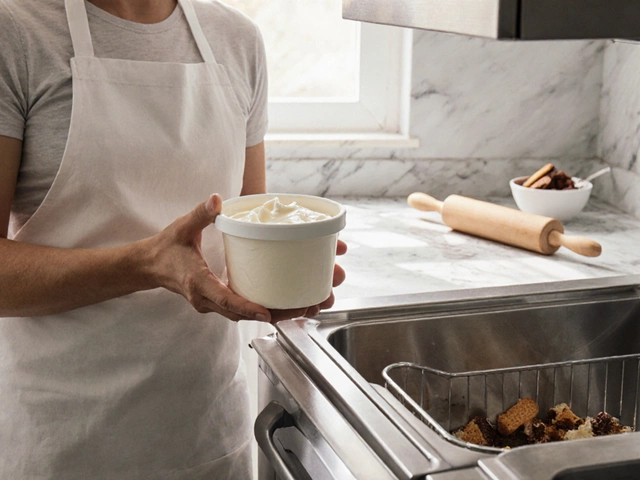
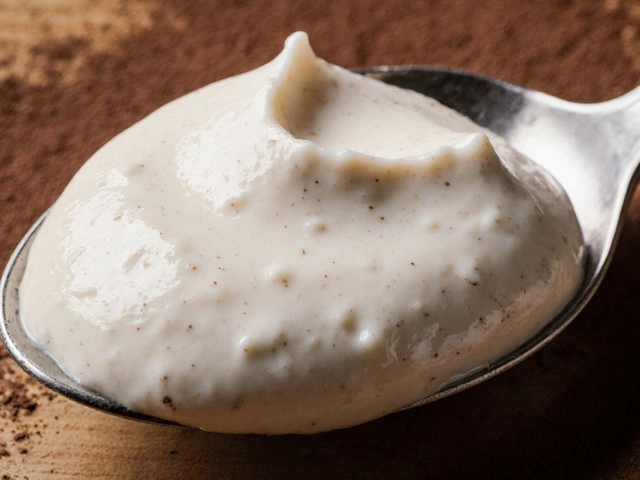
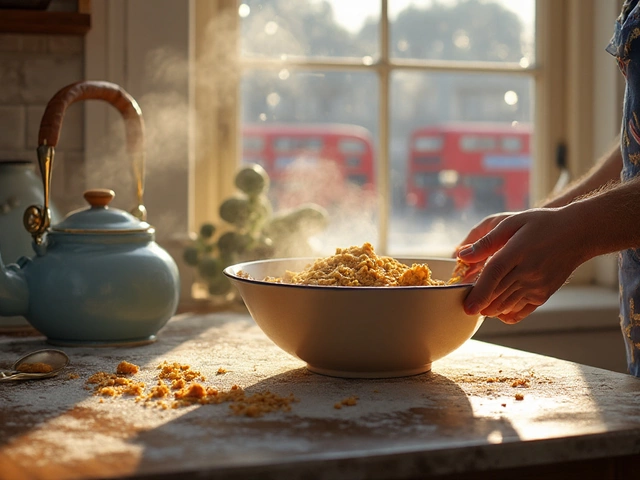
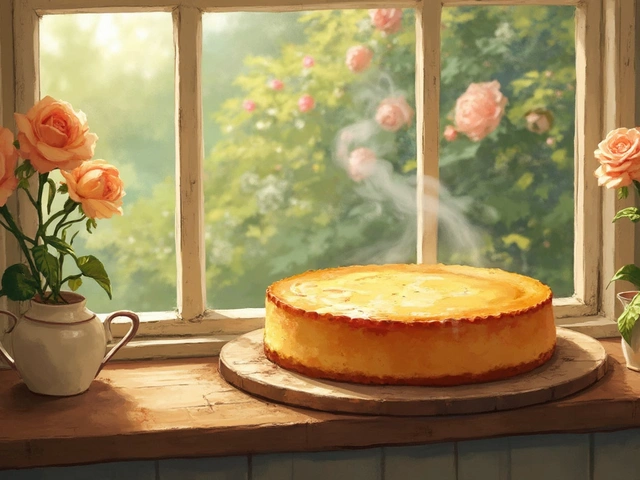


Write a comment